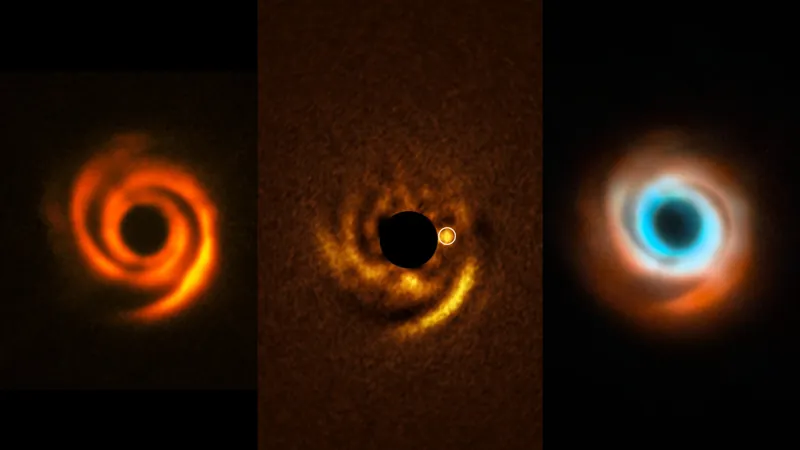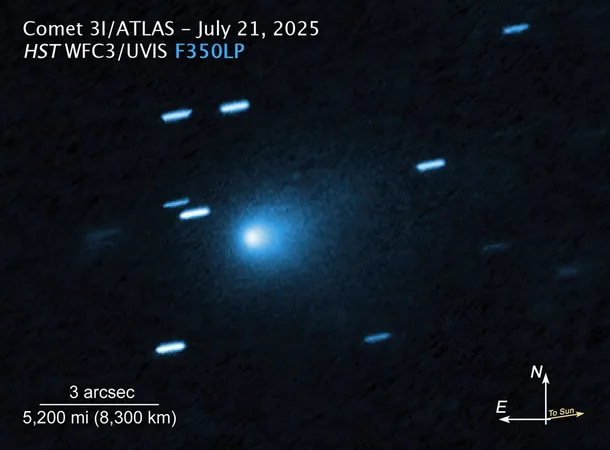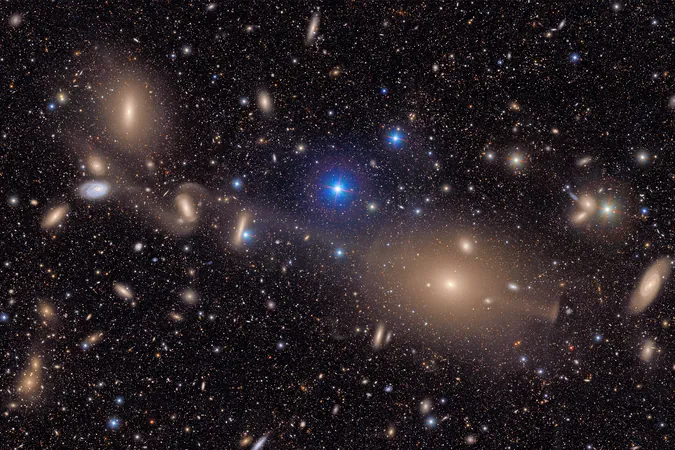
Astronomers Stunned: Are We Watching a Planet Form in Real Time?
2025-07-21
Author: Benjamin
An Astonishing Discovery in the Cosmos
In a groundbreaking revelation, astronomers have spotted what appears to be a planet taking shape, etching intricate spirals within a gas and dust disk surrounding a young star. This revelation could unlock secrets about the formation of planetary systems, including our very own solar system.
An Exoplanet in Action!
The young exoplanet is nestled in the protoplanetary disk of HD 135344B, a star that's around 10 million years old—much younger than our sun, which is a middle-aged 4.6 billion years old. Surprisingly, this cosmic cradle is located about 440 light-years away in the Scorpius OB2-3 star-forming region.
A Closer Look through Groundbreaking Technology
Using the cutting-edge Very Large Telescope (VLT) equipped with the Enhanced Resolution Imager and Spectrograph (ERIS), researchers may have captured the first instance of an actively forming planet. Francesco Maio, a leading researcher from the University of Florence, expressed immense excitement about the findings: "We may be watching a planet come into existence in real time."
Meet the Baby Planet: Bigger than Jupiter!
This burgeoning planet is estimated to be twice the size of Jupiter and orbits HD 135344B at a distance similar to that of Neptune—from the sun—about 30 times further than the Earth.
Gathering Material Like a Pro!
As this potential planet swirls through the disk, it is busy collecting essential materials to bolster its growth. This gathering process contributes to the intricate ring and channel structures seen in protoplanetary disks, much like grooves on a vinyl record or the spiraling arms of the Milky Way.
A New Era in Planetary Formation Research
Detecting such young planets has posed a significant challenge for astronomers. Although the spiral structure of HD 135344B's protoplanetary disk was previously observed, the presence of the planet remained elusive—until now.
Thanks to ERIS, scientists could penetrate deeper into the disk, identifying a likely culprit for its spiral patterns: a hidden exoplanet. Remarkably, this baby planet lies at the base of one of the disk’s spiral arms, precisely where scientists theorized it would be.
A Turning Point in Astronomy?
Maio emphasizes the significance of this discovery: "This detection is a potential turning point. Unlike many previous observations, we can directly perceive the planet's signal while it remains deeply embedded within the disk. This direct observation gives us greater confidence in confirming the planet’s existence as we’re witnessing the planet's own light."
As we peer deeper into the cosmos, this exciting find serves as a remarkable reminder that the universe is continuously shaping new worlds, and we may just be fortunate enough to witness it.









 Brasil (PT)
Brasil (PT)
 Canada (EN)
Canada (EN)
 Chile (ES)
Chile (ES)
 Česko (CS)
Česko (CS)
 대한민국 (KO)
대한민국 (KO)
 España (ES)
España (ES)
 France (FR)
France (FR)
 Hong Kong (EN)
Hong Kong (EN)
 Italia (IT)
Italia (IT)
 日本 (JA)
日本 (JA)
 Magyarország (HU)
Magyarország (HU)
 Norge (NO)
Norge (NO)
 Polska (PL)
Polska (PL)
 Schweiz (DE)
Schweiz (DE)
 Singapore (EN)
Singapore (EN)
 Sverige (SV)
Sverige (SV)
 Suomi (FI)
Suomi (FI)
 Türkiye (TR)
Türkiye (TR)
 الإمارات العربية المتحدة (AR)
الإمارات العربية المتحدة (AR)